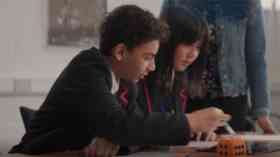
Printing in the third dimension
The evolution of 3D printing in schools is not new, but with the reliance on technology becoming ever-more stringent, is it a surprise that more schools haven’t invested in 3D printing technology? Education Business explores the situation
3D printing is no longer the new technology that everyone is talking about. Since its arrival in 1984 (under the name of rapid prototyping), the technology has received wide spread press coverage and more than its fair share of acclaim. Yet, for some reason, many educators remain unaware of the benefits that 3D printing can offer to the classroom.
3D printing is the process of making a three-dimensional object from a digital model. Using an additive process whereby successive layers of material are laid down, it produces layers that are thinly sliced and horizontally cross-sectioned.
Poised to revolutionise manufacturing in a similar fashion to how the computer changed media and the MP3 changed music, the generation that are either currently in school or due to enter school in the next decade, will benefit highly from familiarisation with the technology in the classroom. If the skills gap that is predicted to effect UK industry over the next decade becomes a reality, then the advantage of a pre-existing knowledge of systems such as 3D printing will heighten the number of entrepreneurs available.
Changing the lesson landscape
One of the reasons for why schools remain sceptical of investing heavily in 3D technology is funding. Many schools, and indeed departments within those schools, feel that they are unable to justify the cost of the technology.
However, since its initial interest growth, 3D printers have become not only far more affordable – many companies who sell 3D printers to schools offer all-in-one packages for squeezed academic budgets – but have also become more in demand. 3D printers are not only deemed an option for Design & Technology lessons, but also possess numerous benefits for subjects across the board. In science labs students can build models of molecules or print out complete models of cells. In mathematics, abstract problems become far less abstract as angles, shapes and other geometry topics can take on new meaning for students which will benefit learning. More obviously, in engineering and other design subjects, product design leaves the page to showcase a new way of understanding.
Hands-on technologies create a different experience for students, a certain ‘wow’ factor and an excitement that is sometimes lost in the traditional subject. 3D printing enables more teacher-student-technology interaction and has been reported to increase engagement. Critical thinking, often looked down upon, is brought to life, creativity is encouraged and practicality evolves, as there is an end product to work before.
FDM machines
The most common technology used in schools is fused deposition modelling (FDM). An extruder rather like a hot glue gun squirts softened polymer onto a base. The new polymer must fuse with the previous layer and there are two keys to this – the temperature of polymer being extruded and keeping the model as close to the glass transition temperature as possible. Too hot and the part will droop and distort losing dimensional accuracy.
Two techniques are used to keep the model warm. Stratasys were the first to market with an FDM machine and patented a heated chamber kept a few degrees below the glass transition temperature of the polymer.
Heating the table is another method of keeping the model warm but can suffer from temperature drop as the build gets taller.
FDM machines that aren’t enclosed are also susceptible to changes in room temperature and draughts from doors and windows.
Materials
The most popular polymers for FDM 3D printers are ABS and PLA. Acrylonitrile Butadiene Styrene (ABS) combines the strength and rigidity of acrylonitrile and styrene polymers with the toughness of polybutadiene rubber.
The 3D printers with enclosed build spaces heat the chamber to around 100 degree celsius, just below the liquid state to ensure new layers fully bond with the previous layer. ABS has good impact resistance and toughness. It is amorphous with no specific melting point but the temperature when it changes to a liquid state (glass transition temperature) is 105 degree celsius.
Density is 0.350 – 3.50g/cc; hardness is 90.0–119 (Rockwell); tensile strength (ultimate) is 24.1–73.1 MPa; and tensile modulus is 0.778 – 6.10 GPa. Polylactic Acid (PLA) plastics are produced from corn or dextrose including Tapioca roots and sugarcane. PLA is bio‑degradable and used for medical implants and food containers although opinion seems divided on how green PLA actually is.
PLA has good impact resistance and toughness. The glass transition temperature of PLA is 60–65oC. Density is 1.00 –
1.62g/cc; hardness is 59.0–77.0 (Shore D); tensile strength (ultimate) is 16.0 – 114 MPa; and tensile modulus is 2.7–16 GPa.
The low melting point of PLA means it can be encased in plaster-like moulding materials then burned out with the space filled with molten metal, a variation on lost wax casting.
Advantages
The advantages of FDM machines is that the materials are low cost and there are low cost versions of printers available. They are high strength models with relatively short build times.
The disadvantages of such materials is that additional material/structures are needed to support overhanging geometry and support material must be removed by breaking away or dissolving. Support material is waste and parts cannot easily be nested inside one another or vertically. Plus these machines only come in single colour parts.
If the technology wave that is sweeping through most industries continues at its current pace, our reliance on technology in the next 10, 20 or 50 years will demand a school based understanding of industries like 3D printing.
The excitement and ‘wow’ factor that it may bring to a lesson today, may be a necessity in the future.
Further Information:Latest News
08/01/2026 - 10:30
The government is launching a new app allowing students to view their GCSE results on their phones for the first time from this summer.
08/01/2026 - 09:45
Education Business LIVE has announced that Professor Samantha Twiselton OBE of Sheffield Hallam University will speak at the event in March 2026, delivering two thought-provoking sessions focused on initial teacher training and SEND provision.
07/01/2026 - 10:10
Solve for Tomorrow is a free, curriculum-linked programme which is mapped to Gatsby Benchmarks 4, 5, and 6, helping teachers embed careers education without adding to workload.
06/01/2026 - 10:24
London's universal free school meals programme has not led to improvements in pupil attainment during its first year, but has eased financial pressure and reduced stress for families.
05/01/2026 - 10:44
New regulations have come into force from today, banning adverts for unhealthy food and drinks before 9pm, and online at all times.







